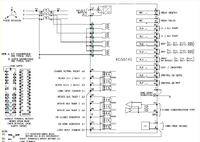Jester009
Newbie level 5
relay circuit
Hi,
I have been assigned to build a circuit to test overcurrent relays as my final year project. The simple idea is to send a current a current to the relay and measure the tripping time.
This is the first time I'm using the theories I learnt into action !
I have a basic plan. I would like to know if I'm taking the right path.
1. For the current injection circuit a H - Brigde is used.
2. Controlling the H - Brige is done by PIC 16F877
3. Software interface is done by Visual C#, so that the user can select the current to inject.
The thing is I don't have a clear idea about how to proceed. I would like to get schematics and resource material so that I can go forward. I have to complete the project within a month time. So any feedback is deeply appreciated!
Thanks in advance
Jester009
Hi,
I have been assigned to build a circuit to test overcurrent relays as my final year project. The simple idea is to send a current a current to the relay and measure the tripping time.
This is the first time I'm using the theories I learnt into action !
I have a basic plan. I would like to know if I'm taking the right path.
1. For the current injection circuit a H - Brigde is used.
2. Controlling the H - Brige is done by PIC 16F877
3. Software interface is done by Visual C#, so that the user can select the current to inject.
The thing is I don't have a clear idea about how to proceed. I would like to get schematics and resource material so that I can go forward. I have to complete the project within a month time. So any feedback is deeply appreciated!
Thanks in advance
Jester009
